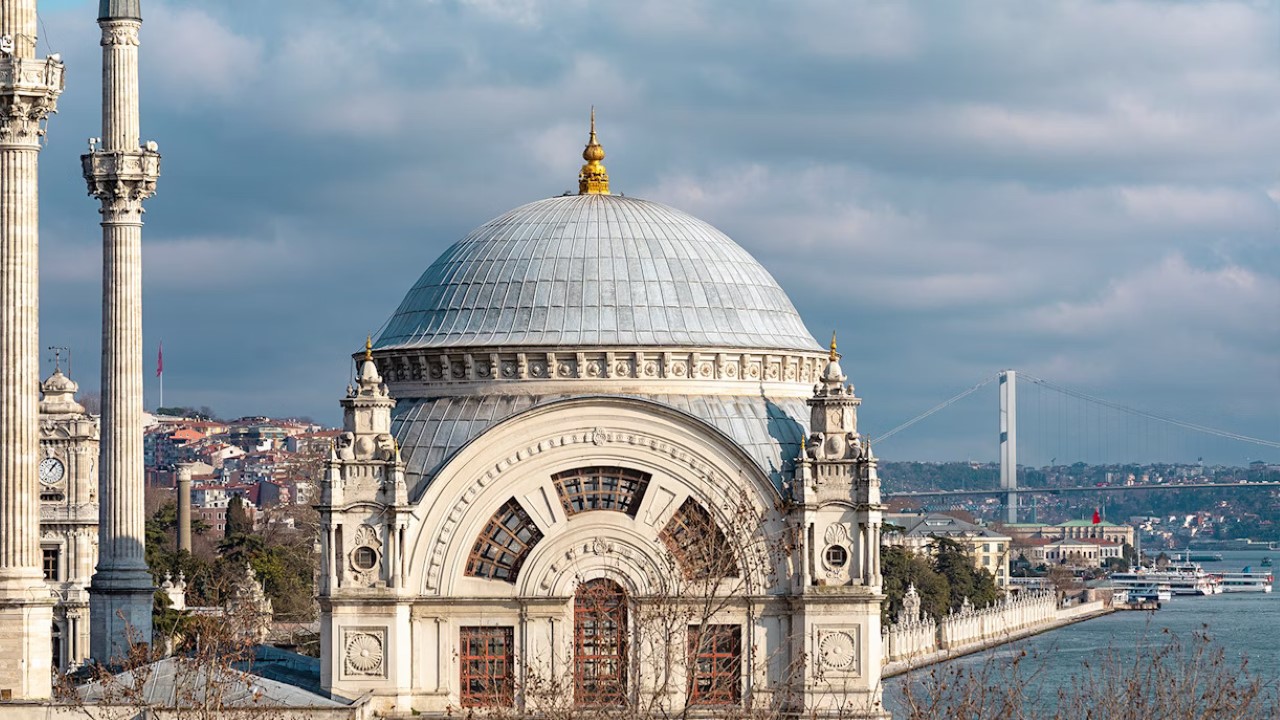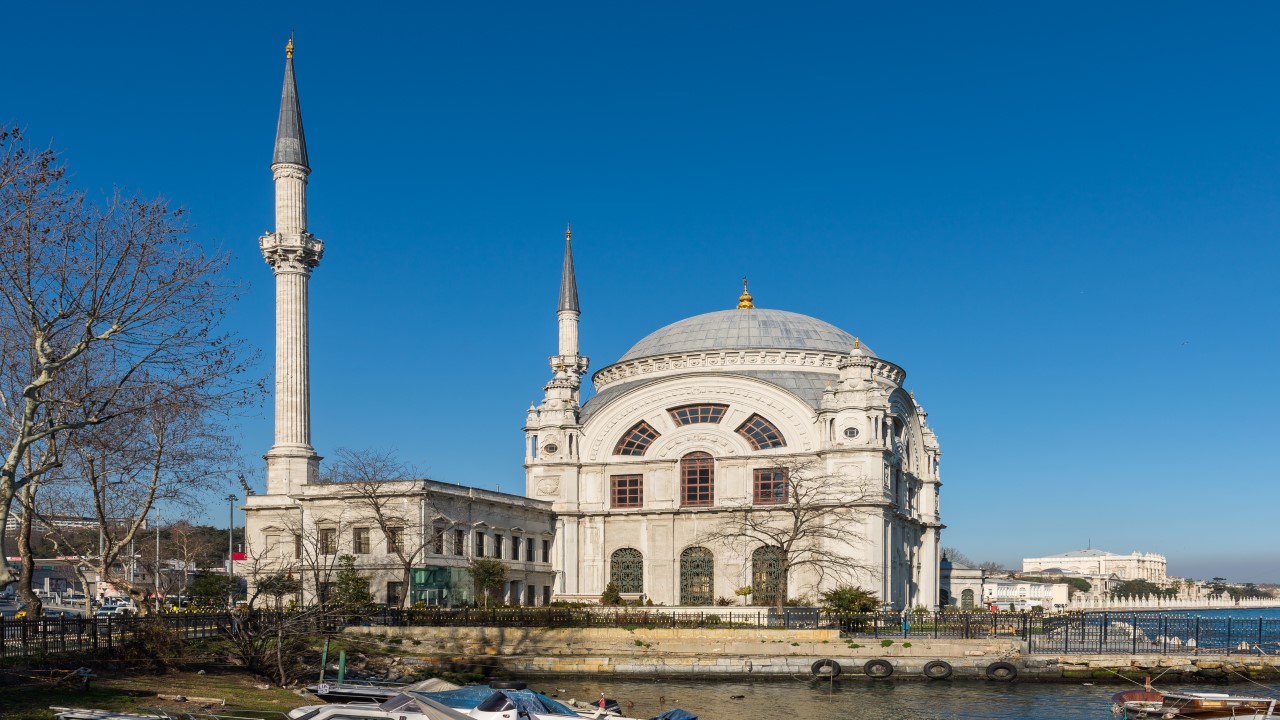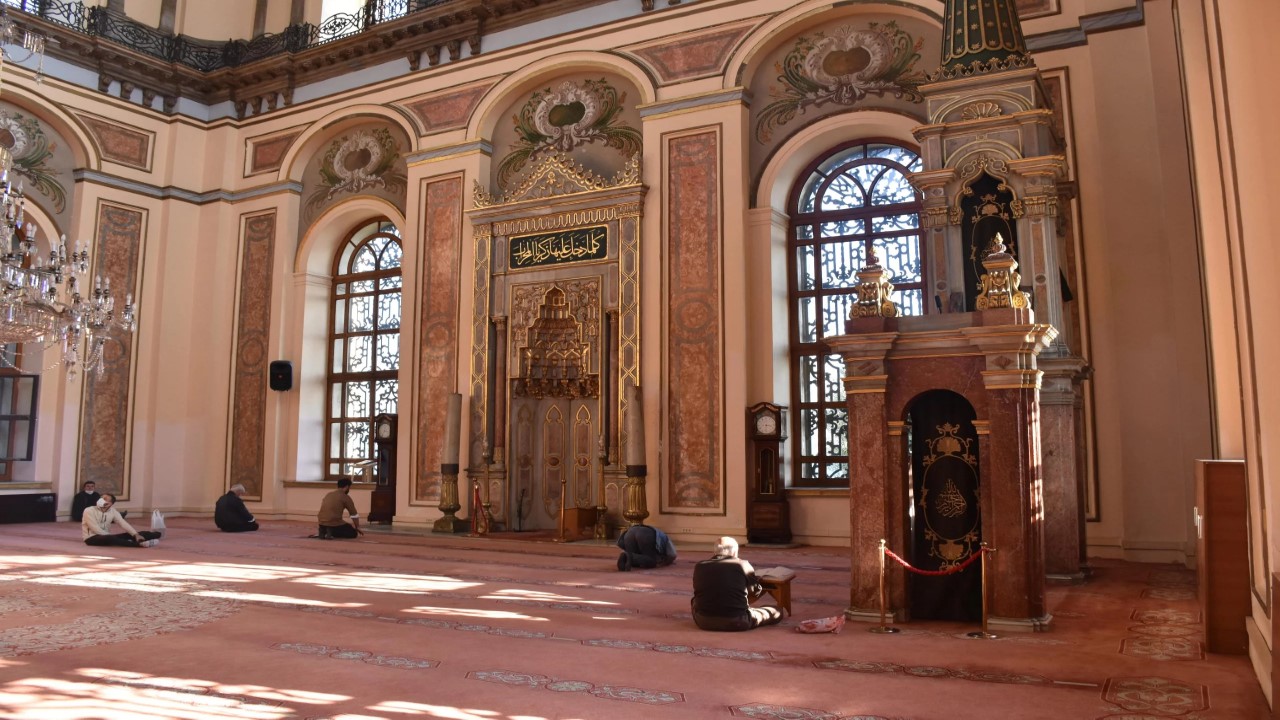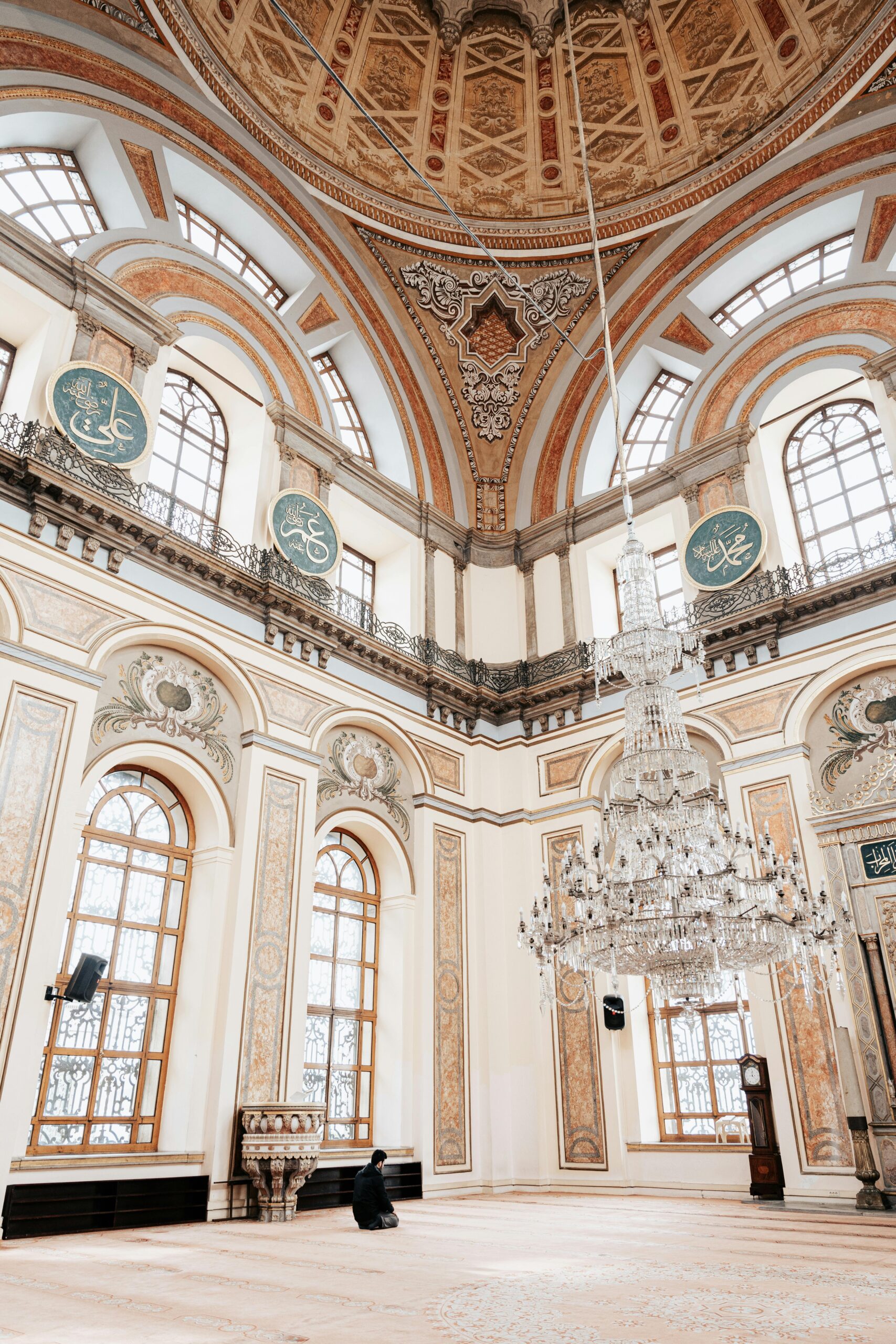Dolmabahçe Mosque: A Masterpiece of Ottoman Baroque Architecture
Introduction
Situated on the shores of the Bosphorus, the Dolmabahçe Mosque (Dolmabahçe Camii) is a remarkable architectural gem that stands out with its unique Ottoman Baroque design. Located near the Dolmabahçe Palace, the mosque is a striking symbol of 19th-century Ottoman modernization, blending classical Islamic elements with European influences. Despite being smaller than some of Istanbul’s grand mosques, Dolmabahçe Mosque holds an essential place in the city’s cultural and historical landscape.

The Historical Background of Dolmabahçe Mosque
Commissioning and Construction
The Vision of Bezmialem Valide Sultan
Dolmabahçe Mosque was commissioned by Bezmialem Valide Sultan, the mother of Sultan Abdülmecid I, in the mid-19th century. She was a prominent figure in the Ottoman court, known for her charitable works and contributions to Istanbul’s architectural development. The mosque was meant to serve as a royal place of worship near the newly constructed Dolmabahçe Palace, symbolizing the empire’s transition towards European-influenced architecture.
Completion Under Sultan Abdülmecid I
Unfortunately, Bezmialem Valide Sultan passed away before the mosque’s completion. Following her death, Sultan Abdülmecid I took over the project, ensuring that the mosque was finished in 1855. The renowned Armenian-Ottoman architect Garabet Balyan, who also designed Dolmabahçe Palace, was responsible for its construction.

Architectural Design and Features
Fusion of Ottoman and European Styles
Dolmabahçe Mosque is an outstanding example of Baroque-influenced Ottoman architecture, showcasing an elegant combination of Islamic tradition and European aesthetics. Unlike the classical Ottoman mosques designed by Mimar Sinan, Dolmabahçe Mosque reflects the Westernization efforts of the Ottoman Empire.
Distinctive Features of the Mosque
- A Grand Central Dome: The mosque’s most striking feature is its large central dome, which rests on a square base and is supported by tall, arched windows that allow an abundance of natural light to enter the prayer hall.
- Slender Minarets: Unlike the traditional Ottoman mosques with multiple minarets, Dolmabahçe Mosque has two slender minarets with a delicate design, reinforcing its graceful appearance.
- Baroque and Rococo Elements: The mosque incorporates ornate decorations, curved lines, and floral motifs, which are characteristic of Baroque and Rococo architecture.
- Wide Windows and Open Spaces: The placement of large windows provides a unique sense of openness, a rare feature in classical Ottoman mosques.
Interior Beauty and Ornamentation
Calligraphy and Decorations
The interior of Dolmabahçe Mosque is adorned with exquisite calligraphy, mainly featuring inscriptions of Quranic verses. The calligraphy work was done by Kazasker Mustafa İzzet Efendi, one of the most famous Ottoman calligraphers of the time, who also worked on the calligraphy in the Hagia Sophia.
Marble and Crystal Chandeliers
The mosque’s prayer hall is illuminated by magnificent chandeliers, similar to those found in Dolmabahçe Palace. The walls and pillars are adorned with marble panels, enhancing the mosque’s luxurious feel.

Dolmabahçe Mosque’s Role in Ottoman and Modern History
The Mosque During the Decline of the Ottoman Empire
By the late 19th and early 20th centuries, the Ottoman Empire faced significant political turmoil. Dolmabahçe Mosque, due to its proximity to Dolmabahçe Palace, witnessed crucial moments in the empire’s final years. Several sultans performed their prayers here, and the mosque remained a symbol of the imperial court’s presence in Istanbul.
The Republican Era and Conservation Efforts
After the establishment of the Turkish Republic in 1923, Dolmabahçe Mosque continued to function as a place of worship. Unlike many other Ottoman-era buildings, it was well-preserved, thanks to restoration projects initiated by cultural preservation organizations.
Major Restoration Projects
In recent years, Dolmabahçe Mosque has undergone several restoration efforts to maintain its structural integrity and aesthetic appeal. The Turkish government and heritage organizations have ensured that the mosque remains a historical and religious landmark, open to both worshippers and tourists.

Cultural and Religious Significance
A Symbol of Ottoman Elegance
Dolmabahçe Mosque represents the Ottoman Empire’s artistic and architectural transition in the 19th century. While maintaining its Islamic essence, the mosque’s European influences reflect the empire’s efforts to modernize and integrate Western artistic styles.
A Popular Destination for Tourists and Worshippers
Due to its stunning location on the Bosphorus, Dolmabahçe Mosque attracts thousands of visitors each year. Tourists admire its breathtaking architecture, while worshippers appreciate the serene and spiritually uplifting environment.
Conclusion
Dolmabahçe Mosque stands as an elegant testament to Ottoman Baroque architecture, blending Islamic tradition with European artistic influences. Commissioned by Bezmialem Valide Sultan and completed under Sultan Abdülmecid I, this stunning mosque reflects the changing architectural trends of the Ottoman Empire in the 19th century. Whether one visits for its historical significance, architectural beauty, or spiritual atmosphere, Dolmabahçe Mosque remains a must-see landmark in Istanbul.
FAQs about the Dolmabahçe Mosque
Dolmabahçe Mosque is located in the Beşiktaş district of Istanbul, near Dolmabahçe Palace, along the Bosphorus shoreline.
The mosque was designed by Garabet Balyan, a prominent Armenian-Ottoman architect, who also designed Dolmabahçe Palace.
Dolmabahçe Mosque features a unique blend of Ottoman Baroque and Rococo architecture, incorporating European artistic elements into traditional Islamic design.
Yes, the mosque is open to both worshippers and tourists. Visitors are welcome to admire its architecture and historical significance while respecting the mosque’s religious customs.
The best time to visit is during morning hours on weekdays to avoid crowds. Sunset is also a great time to experience the breathtaking Bosphorus views from the mosque’s courtyard.
